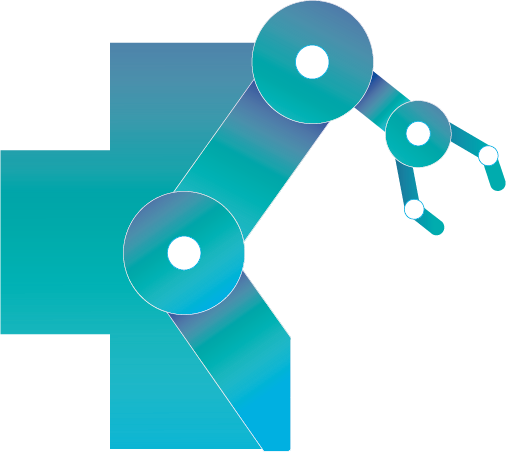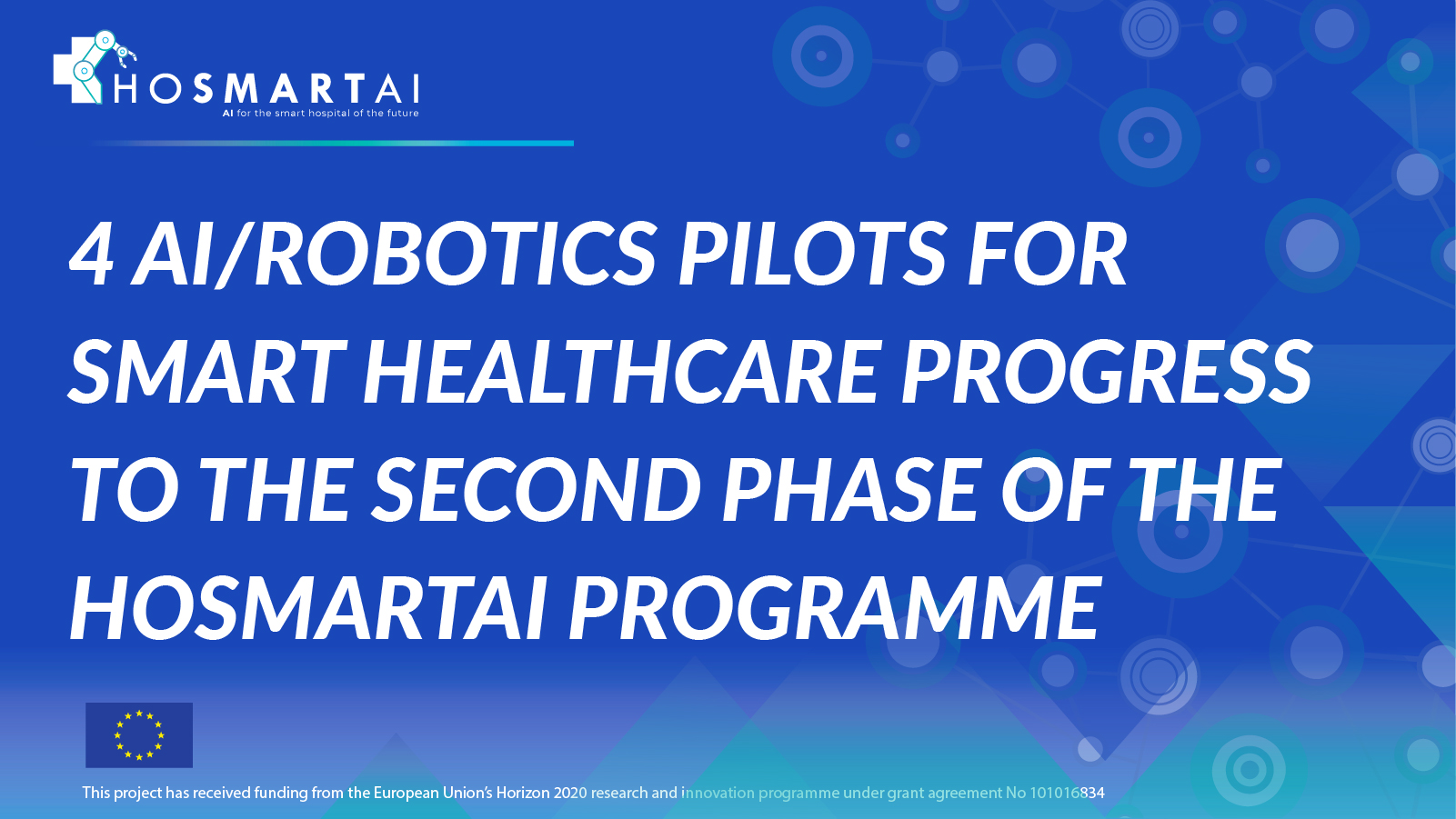Results are out:
4 AI/Robotics pilots for smart healthcare progress to the second phase of the HosmartAI programme
They say that “time flies when you’re having fun”… and our Open Call 2 winners have already completed the first phase of the programme – the DESIGN phase. Two months of intense work have passed, fine-tuning their pilots planning and technology usage with HosmartAI.
This first phase culminated with a review meeting. The consortia behind the innovative pilots presented their main achievements to the HosmartAI evaluators, and the results couldn’t be better: all four AI/Robotics pilots for smart healthcare have received the green light to progress to the next phase of the HosmartAI support programme.
Main achievements
Let’s dive into the exciting work that has been developed so far. Here are, in the words of the amazing consortia doing the hard work, the main achievements obtained so far:
Heart bAIt: Remote and unobstructed assessment of vital signs for arrhythmia screening with edge computing
“During the Design phase of the Heart bAIt project, we were able to envision and define what our solution would be and look like. We got to interview doctors and patients in order to collect user requirements and gain insights into the needs and expectations of both the healthcare professionals and the patients. This was a good achievement because it allowed us to get closer to the users and design a solution that would accommodate their needs and at the same time serve its purpose.”
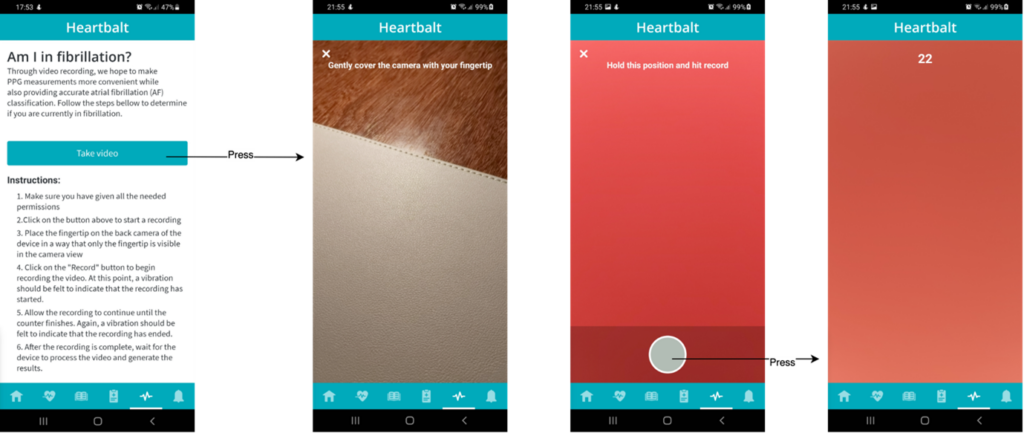
SICS: Smart Intraoperative Clinical Surveillance
“During the DESIGN phase of the HosmartAI programme, our team accomplished several key activities and achieved significant milestones. We successfully designed a comprehensive plan for the upcoming clinical pilot study, developed a detailed clinical study protocol, and submitted it to the ethical committee of the UMCG, where it received approval. Additionally, we established a data transfer agreement between Aisthesis Medical and the UMCG, enabling the extraction and secure transfer of data from the UMCG to Aisthesis Medical. Furthermore, we formulated a robust data management plan, adhering to FAIR principles. These accomplishments lay a solid foundation for the next phases of the HosmartAI programme, paving the way for further progress and advancements.”
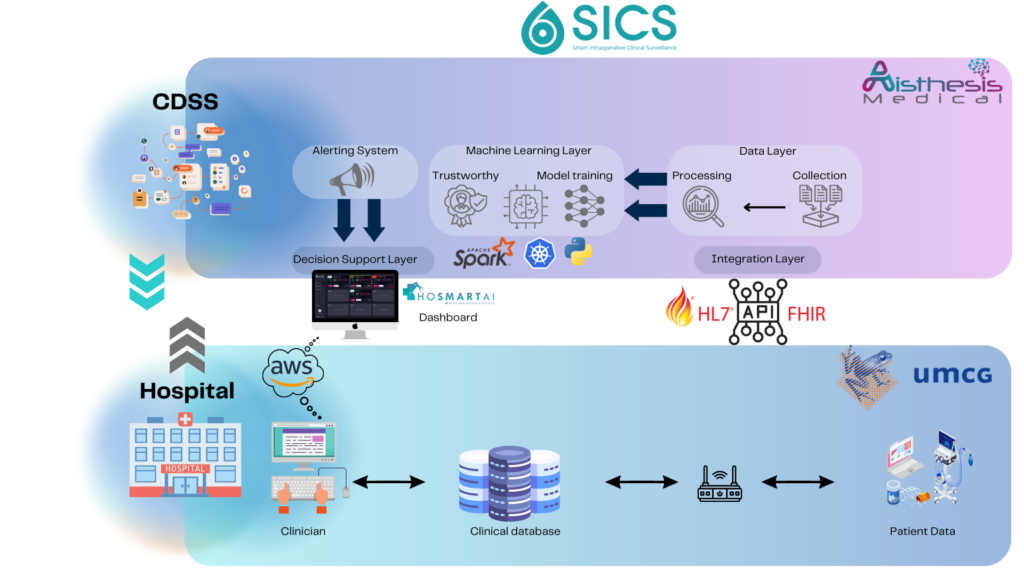
SoftLungX: Software for Diagnosis of Lung Diseases from Chest X-ray Images
“The DESIGN phase of SoftLungX was tasked with the procurement of medical data for future utilisation in the second phase of the project, along with the identification of technologies and system architectures for both deep learning models and decision support system creation. Data acquired by medical professionals during the DESIGN phase is sufficient for the creation of a comprehensive test set, for the purposes of deep learning model evaluation in an environment that closely imitates a real-world clinical environment. Additionally, data acquired from public medical image databases represents a great baseline for future deep learning model training regarding both disease classification and lung segmentation. The identified system and neural network architectures are proven to achieve satisfactory results in previous endeavours undertaken by both the technology provider consortium members as well as other researchers.”
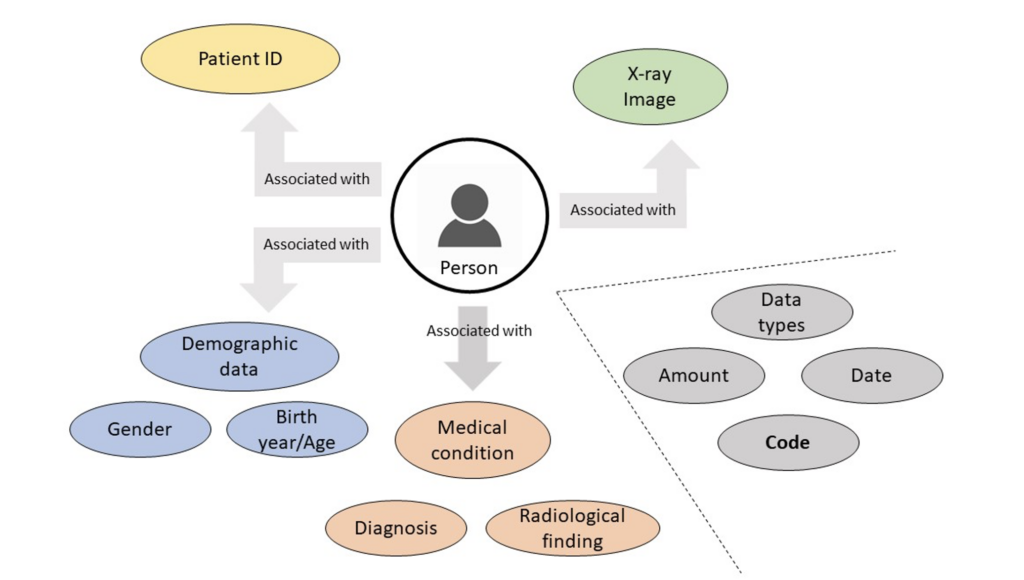
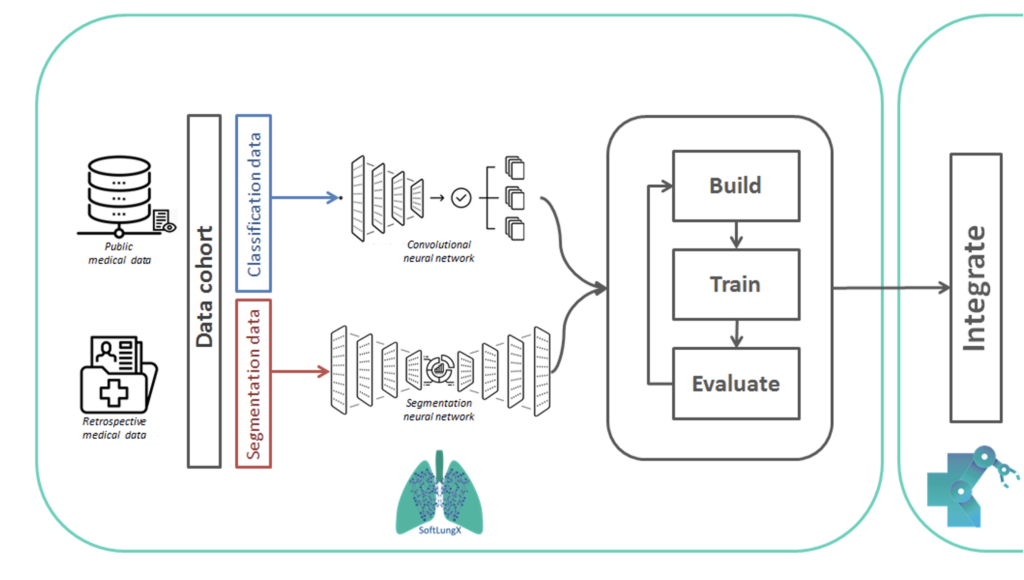
VoiceAI: Prediction of Major Depressive Disorder using Vocal Biomarkers
“The VoiceAI pilot aims to introduce an AI solution based on a novel vocal biomarker technology into an existing healthcare provider for the early detection and management of Major Depressive Disorder (MDD). During Phase 1 (Design) of the project, the Ensofy team worked with Medic4all Italia to develop the detailed pilot protocol that will be used to carry out the project. Primary care physicians were successfully recruited and onboarded on the study. Particular attention was paid to ensuring a broad professional and gender representation of the doctors recruited. Finally, Ensofy’s technical team conducted a comprehensive assessment of the HosmartAI components, selected and validated the key components to be used, and drafted a detailed technical implementation plan.”
What’s coming next…
The consortia have now entered the second phase of the HosmartAI programme, during which they will have 6 months to develop, deploy and operate their pilots. This is the core phase: our open call #2 winners will perform the technical developments and deploy them at the healthcare unit to achieve what has been previously proposed.
If you are curious about what’s coming next, wait no more. Here is a sneak peek presented by the 4 winning consortia:
Heart bAIt: Remote and unobstructed assessment of vital signs for arrhythmia screening with edge computing
“During the DEVELOP & DEPLOY & OPERATE, we have already developed the technology for signal capture. In the next phases, we will do the PPG signal extraction and deep learning pipeline and develop the edge-computing technology. With help from our clinical partners, we will also improve the clinical decision support system and do clinical validation of our solution’s results.”
SICS: Smart Intraoperative Clinical Surveillance
“In the DEVELOP & DEPLOY & OPERATE phase of the project, our focus will shift towards utilising the data received from the UMCG. We will perform exploratory data analysis (EDA) to gain insights and better understand the dataset. Using this knowledge, we will design and develop a machine learning pipeline specifically tailored for predicting intraoperative hypotension. The developed AI models will then undergo rigorous validation using the UMCG data to ensure their accuracy and reliability. Simultaneously, we will work on developing a software platform capable of hosting the real-world inference of the machine learning pipeline, enabling seamless deployment and operation of the system. This phase encompasses a comprehensive effort to advance the project from development to deployment and ultimately to operationalise the AI models for practical use in clinical settings.”
SoftLungX: Software for Diagnosis of Lung Diseases from Chest X-ray Images
“DEVELOP & DEPLOY & OPERATE phase will present the SoftLungX consortium with challenges regarding medical image segmentation, neural network-based disease classification as well as platform integration and decision support system evaluation and refinement in a simulated clinical environment. The technology provider part of the consortium will be tasked with the development of a decision support system, which includes the development of a modified U-net based segmentation neural network adapted for lung mask extraction from X-Ray images and the development of a disease classification convolutional neural network created using a pretrained CheXNeXt model expanded with additional diseases.
Additionally, the technology provider team will be tasked with adapting the created decision support system to HosmartAI medical platform technologies for the purposes of platform integration. Medical professionals from University Clinical Centre Kragujevac will be tasked with model evaluation, through the utilisation of decision support system and giving feedback for improvements during system refinement.”
VoiceAI: Prediction of Major Depressive Disorder using Vocal Biomarkers
“During the next Phase (2 – Develop, deploy & operate) of the pilot, the vocal biomarkers technology will be tested at Medic4all. The activities will include deployment of the technology on Medic4all’s telehealth platform, recruitment of the study participants whose voice samples and mental health information will be collected, and collection of other project-specific data to ensure successful validation of the technology in telehealth care settings.”
The HosmartAI journey
When they got selected to the HosmartAI 12-month programme, the four open call #2 winners knew they were going to receive grants up to €145k, support services for the development of their experimental pilot, access to the HosmartAI ecosystem, visibility and the opportunity to work with innovative European healthcare stakeholders.
But the HosmartAI journey is this and much more! Check what the winning consortia have to say about their experience so far:
Heart bAIt: Remote and unobstructed assessment of vital signs for arrhythmia screening with edge computing
“Throughout the course of this project with HosmartAI, I have been thrilled by the progress we have made and the potential it holds. Being a part of a project that brings a new way to help users with atrial fibrillation and provide them with a sense of companionship is an incredibly fulfilling experience. The opportunity to create something that can positively impact individuals’ lives is both inspiring and rewarding.”
SICS: Smart Intraoperative Clinical Surveillance
“Our participation thus far has been immensely fulfilling and rewarding. The project has provided us with valuable opportunities to lead and collaborate with a talented team, driving progress in the field of healthcare AI. Being involved in every phase, from DESIGN to DEVELOP & DEPLOY & OPERATE, has allowed me to witness the project’s evolution first-hand. It has enhanced our skills in project management, data analysis, and machine learning. What we appreciate the most about this experience is the ability to make a tangible impact on healthcare outcomes, leveraging cutting-edge technology to improve patient care. The collaborative nature of the project and the collective efforts of the team have been the highlight, fostering innovation and pushing the boundaries of what is possible in AI-driven healthcare.”
SoftLungX: Software for Diagnosis of Lung Diseases from Chest X-ray Images
“Participation in the HosmartAI project as one of the chosen pilots has improved cooperation between the technology provider and the medical institution for possible future endeavours. Furthermore, new knowledge has been acquired by all members of the consortium in terms of data procurement approaches, data selection and processing techniques and identification of new image analysis technologies. Cooperation of the SoftLungX consortium with the HosmartAI has been on the highest level the team looks forward to future collaboration.”
